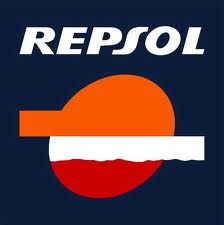Repsol 2010 Net Income Triples To 4.69 Billion Euros
Repsol posted net income of 4.693 billion euros for 2010 compared to 1.559 billion euros in the previous year. Excluding extraordinary items, recurring net profit improved 54.9% to 2.360 billion euros.
The 2010 earnings increase is mainly due to the good performance of the company’s ongoing activities, boosted in the fourth quarter by the capital increase of Repsol Brazil.
All the company’s core businesses experienced significant increases in recurring operating income: Upstream (+66.6%), Downstream (+45.5%), YPF (+106%) and Gas Natural Group (+14%).
In 2010, Repsol’s recurring operating income was 5.213 billion euros, 66.7% higher than the previous year, mainly due to improved upstream realization prices and a 3.2% increase in production.

Improved refining margins also had a positive impact, as they almost doubled to $2.5 per barrel, as well as the results of the marketing business and the recovery of the chemicals’ business margins and volumes.
YPF’s recurring operating income rose by 106% to 1.625 billion euros compared with 789 million euros in 2009, mainly due to the increasing convergence of domestic prices with international parity.
2010: DECISIVE STEPS IN THE HORIZON 2014 STRATEGY
The agreement between Repsol and China’s Sinopec to develop exploration and production projects offshore Brazil, allowed the company to meet one of its main strategic objectives and was a major milestone of the last few years.
In December 2010, Repsol and Sinopec successfully concluded a deal whereby the Chinese company subscribed in its entirety a capital increase in Repsol Brazil, a deal that led to the creation of one of the largest private energy groups in Latin America, valued at $17.777 billion. Repsol owns 60% of the resulting company and Sinopec the remaining 40%.
Also in Brazil, exploration wells were drilled in the Guara, Carioca and Piracucá fields, all of which key assets in Repsol’s Strategic Plan, which further increased the prospects of the already enormous potential of these fields. Additionally, a new discovery was made in the Creal B well (Albacore Leste block) where production testing will commence in 2013.
Another milestone reached during the year was the start-up of the gas liquefaction plant, at the Peru LNG project. The plant is located in Melchorita (Peru), and is the first gas liquefaction plant in South America.
The project involves total spending of $3.8 billion, the largest investment ever made in a single project in the history of Peru.
In Venezuela, the increase in reserves in the Perla field and the award of a project to develop heavy crude oil reserves in the Carabobo project are clear examples of the progress being made in Repsol’s upstream strategy.
In November 2010, YPF was awarded 13 new licenses for exploration of unconventional resources in Argentina’s Neuquen province in partnership with other major international companies including Exxon and Total.
Successful exploitation of unconventional resources (tight & shale resources) have created a very promising new growth vector in Argentina for YPF.
Regarding other major strategic growth projects for Repsol, the expansion and modernization of the Cartagena refinery and the fuel oil reduction unit at the Bilbao Petronor complex have both advanced considerably during 2010. The start of operations at both sites in 2011 will mark the completion of Repsol’s key downstream objectives.
The sale of Repsol’s 5% stake in CLH, 25% stake in Bahia Bizkaia Gas, S.L., 30% stake in the Brazilian REFAP refinery and the agreement to sell the Gaviota underground natural gas storage facility are all part of Repsol’s strategy of gradual divestment of non-strategic assets. The sale of a total of 4.2% of YPF in the last quarter of 2010 is part of a significant advancement in achieving greater diversification of the company’s asset portfolio.
These deals have allowed Repsol to significantly reduce its net financial debt which, excluding Gas Natural Fenosa, stood 1.697 billion euros at year end compared with 4.905 billion in 2009. This implies a net debt to capital employed ratio of 5.5%.
